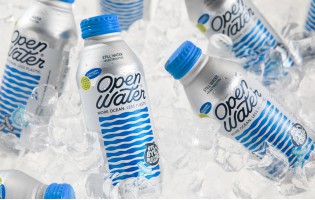Before You Panic-Buy, Here's What You Need to Know About the Looming Meat Shortage
Recent headlines touting a potential nationwide meat shortage stemming from the coronavirus pandemic have American shoppers packing their freezers tightly with all the meat left in the supermarket’s poorly stocked freezer aisle. But as proven by the nation’s rush on toilet paper, hoarding meat is both unnecessary and unwise—not just because those steaks you splurged on may suffer from freezer burn when you uncover the frosty beef six months from now, or because stores are capping your meat purchases.
According to experts, we should instead be saving room in our freezers for the important stuff (ice cream) because America’s meat supply won’t be totally depleted. Why? Because smaller, more localized meat suppliers can continue to sustain us on a smaller scale as we rely less on the major meat manufacturers and producers that feed most Americans. Here's what you should know about the meat shortage.
The big meat picture
Due to lack of labor and consumers caused by the COVID-19 pandemic, meat supply shortages are evident nationwide—but don't panic. "There are plenty of animals ready to be harvested, just not enough people to process them due to reductions in maximum employees allowed in facilities and high absenteeism due to fear of being exposed to COVID-19," explains Kevin Lindgren, protein buyer at Baldor Specialty Foods. "People are scared about shortages and are buying more meat than ever before." So the meat exists, it's just in home freezers and not freezer cases. It's still, quite literally, in the pasture.
Here's the thing. Four major meat producers—Tyson Foods ($16 billion in beef sales), Cargill ($120 billion of annual sales), JBS USA (22 percent beef market share) and National Beef (13 percent market share)—supply 80 percent of meat in America, with only about 20 percent coming from local and regional meat producers, explains Paul Hong, distinguished university professor of global supply chain management and Asian studies at The University of Toledo. “Such concentration of meat production poses health safety issues,” Hong says. This directly connects to how COVID-19 created a meat shortage, and why the people who control the market may have to produce less meat and charge more for it.
That smaller coalition of companies left, however, are thriving to keep up with demand, including ButcherBox, CrowdCow, and Bay Area-based Belcampo Meat Co. As of early May, the brand’s in-store butcher shop sales increased by two and a half times and online sales have quadrupled. How is that possible when shrink-wrapped packages of chicken wings are literally flying off supermarket shelves?
Sustainable processing versus factory farming
Smaller companies are more likely to control their entire supply chain, from raising the animals to slaughtering, processing, and selling the meat. "America’s biggest meat producers have a different business model," explains Anya Fernald, co-founder and CEO of Belcampo.
The enormous meat producers—the ones currently suffering from COVID-related shortages—contract outside farmers to grow their animals, which will eventually travel through a handful of companies before the meat is packaged with the brand’s name in the supermarket. This doesn't just mean more hands potentially exposed to the virus on the meat, but the labor practices in these processing plants are not ideal: staff work strenuous, long hours in close quarters. “The work environment of meat processing plants is highly labor intensive, and workers do their job in tightly limited space,” Hong says. This, the high death rate of meat plant workers exposed to such working conditions is of greater concern than a meat shortage.
A surplus of high-quality meat
Cheaper meats may be missing from supermarkets, but more premium meats, like grass-fed beef and heritage chickens, can keep up with customer demand. While this sustainable, small-scale farming is considered premium, Fernald points out that the customer perception of a top-shelf item for food is very different. While luxury smartphones or purses cost 10 times more than the standard item, many pasture-raised meats cost roughly only 10 percent more than the baseline. A whole chicken or grass-fed ground beef retails for under $9 per pound.
Processing whole animals (like offal and bones, which have proven health benefits) also keeps operation sustainable and helps more meat stay in circulation. Unlike selling bacon or chicken tenders, which add value to the item with salt or cooking, selling an entire animal helps the company profit from as much of the labor and food that goes into raising it as possible. Buying less-processed cuts of meat typically means less waste, too.
Meat alternatives can be an opportunity, not a limitation
Buying meat may be pricier in the near (and far) future, so many Americans may shift to a diet lower in animal-based protein. As it stands, research from 2016 shows that Americans consume more meat per capita than people in any other nation worldwide, which is detrimental to both health and the environment. The Mediterranean Diet, one of the healthiest diets, is low in red meat consumption. Similarly, plenty of plant-based meat alternatives offer fulfilling, nutritious, and affordable sources of protein that don’t require meat processing plants. With the increasing popularity of plant-based milks and decrease in dairy sales, Americans are already showing that we’re ready to make plant-forward changes in our kitchens.
“I think it’s an important time for us to think about the role that protein plays in our diet overall, and how much protein is actually advisable in our daily diet,” says Suzi Gerber, an expert in diet and food behavior. This potential meat shortage can be an opportunity to recalibrate our understanding of how much protein we actually need per day, forgetting diet fads and trends that may influence the American way of eating more than we realize.
Protein, after all, isn’t everything. The Recommended Dietary Allowance (RDA) for protein is 0.8 grams of protein per kilogram of body weight, and a fully balanced diet also includes carbohydrates, fiber, fats, and vitamins—most of which we wouldn’t have to think about if we ate a diet consisting of colorful produce and whole grains. “The quality of our food choices matters more than the macronutrient compositions of our diet log books, and we have a golden opportunity to change our lifestyle and come out stronger on the other side of this,” Gerber says. “Perhaps this will continue to move our choices towards healthier ones, together as a nation where we can make sustainable choices for ourselves, our budget and medical needs, for animals, and for the planet.”



























































































































































































































 Fruits
Fruits  Organics
Organics  Vegetables
Vegetables  Fresh Cuts
Fresh Cuts  Meat & Poultry
Meat & Poultry  Grocery
Grocery  Dairy
Dairy  Cheese
Cheese  Bakery
Bakery  Seafood
Seafood 